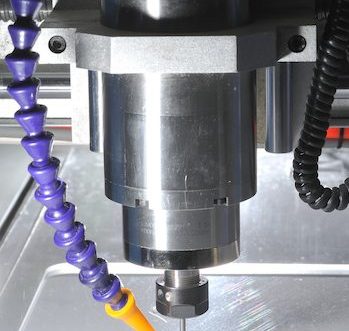
Did you know that CNC machining is a direct result of the Industrial Revolution? First used in the 1960s, this technology has evolved substantially and can create parts otherwise not possible.
CNC machining is a sophisticated manufacturing process that combines CAD and CAM to produce precise and complex components. CNC machining offers unparalleled accuracy, efficiency, and repeatability in various industries.
The CNC machining process continues to revolutionize the manufacturing industry, enabling the production of intricate parts with high precision and ensuring consistent quality.
CNC machining, or Computer Numerical Control machining, is a precise and automated manufacturing process that uses computerized controls and tools to shape and cut various materials into precise components.
It combines the power of computer-aided design (CAD) and computer-aided manufacturing (CAM) to produce intricate and complex geometries with high accuracy and repeatability.
In CNC machining, a computer program generates instructions in the form of a G-code, which controls the movement and actions of the CNC machine.
These machines have cutting tools that can control and position themselves with exceptional precision. This allows for the creation of parts with tight tolerances and intricate details.
CNC machining finds applications in diverse industries, including:
Each of these industries has the demand for precision, efficiency, and reliability.
The CNC machining process begins with designing the part. This involves creating a 3D CAD (Computer-Aided Design) model of the component using specialized software.
The designer defines the:
The designer takes into account the desired specifications and requirements.
The selection of appropriate materials is crucial at this stage. It influences the machining parameters and overall performance of the final product.
Once the design is complete, the next step is generating the toolpath. This is done using CAM (Computer-Aided Manufacturing) software. It translates the 3D CAD model into instructions that the CNC machine can follow.
The CAM software determines the most efficient toolpath for machining the part. Taking into account factors such as:
The toolpath guides the CNC machine on how to move the cutting tools to shape the material into the desired form.
After generating the toolpath, the CNC machine needs to be set up and prepared for machining. This involves loading the CAD model and the associated toolpath into the CNC machine’s control system.
The CNC operator ensures that the necessary cutting tools are selected and properly installed in the machine’s tool holders.
The workpiece or material is securely fixed onto the machine’s worktable to ensure stability and accuracy during the machining process.
With the machine properly set up, the actual machining of the part can begin.
The CNC machine follows the instructions provided in the toolpath and moves the cutting tools along the predetermined paths to remove material from the workpiece.
Throughout the process, the CNC machine continuously monitors and adjusts the cutting parameters, such as:
Once the part has been machined, post-processing steps are often necessary. This typically involves removing excess material that may remain on the part after the machining process.
Various methods can be used for post-processing, such as:
This is done to achieve smooth edges, remove sharp burrs, and improve the overall surface quality of the part.
The final step in the CNC machining process involves inspecting and testing the finished part. This ensures that the part meets the required specifications and quality standards.
Dimensional measurements and tolerance checks are performed using specialized machining tools and equipment to verify the accuracy of the machined part. The part is also inspected visually to identify any defects or imperfections.
Functional testing may be conducted to validate the performance and functionality of the part, ensuring it meets the intended requirements.
One common technique is milling, which involves the use of rotating cutting tools to remove material from the workpiece. Milling machines can perform a wide range of operations, including face milling, slotting, and contouring.
Turning is another widely used technique. The workpiece rotates while a single-point cutting tool removes material to create cylindrical shapes.
Drilling, as the name suggests, involves creating holes in the workpiece using rotating drill bits.
Other techniques include grinding, which utilizes abrasive wheels to achieve precise and fine surface finishes. As well as laser cutting, which employs focused laser beams to cut through materials with high precision.
Electrical discharge machining (EDM) is another technique where controlled electrical discharges are used to erode the material and create intricate shapes.
Advancements in CNC technology have led to the emergence of 3D printing and additive manufacturing. Enabling the creation of parts by adding material layer by layer.
These different techniques offer versatility in CNC machining, allowing manufacturers to choose the most suitable approach for their specific needs.
CNC machining has become a cornerstone of modern manufacturing equipment due to its ability to produce complex and precise parts with efficiency and reliability.
With its wide applications across industries, CNC machining continues to drive innovation and enable the production of intricate components that meet stringent quality standards.
As technology advances, the CNC machining process is expected to further evolve, offering enhanced capabilities and paving the way for new possibilities in the manufacturing world.
Are you looking for plastic CNC services? Contact us today for more information.